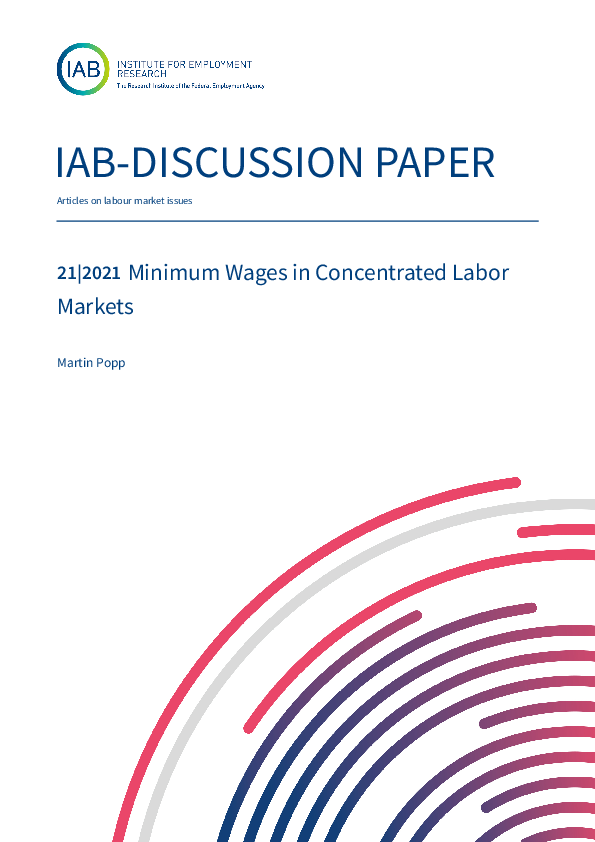Minimum wages in concentrated labor markets

Institut für Arbeitsmarkt- und Berufsforschung, Nürnberg
IAB - Nürnberg
2021
107 p.
minimum wage ; wages ; labour market
IAB Discussion Paper
21/2021
Wages and wage payment systems
https://doku.iab.de/discussionpapers/2021/dp2121.pdf
English
Bibliogr.
"Economists increasingly refer to monopsony power to reconcile the absence of negative employment effects of minimum wages with theory. However, systematic evidence for the monopsony argument is scarce. In this paper, I perform a comprehensive test of monopsony theory by using labor market concentration as a proxy for monopsony power. Labor market concentration turns out substantial in Germany. Absent wage floors, a 10 percent increase in labor market concentration makes firms reduce wages by 0.5 percent and employment by 1.6 percent, reflecting monopsonistic exploitation. In line with perfect competition, sectoral minimumwages lead to negative employment effects in slightly concentrated labor markets. This effect weakens with increasing concentration and, ultimately, becomespositive in highly concentrated or monopsonistic markets. Overall, the results lend empirical support to the monopsony argument, implying that conventional minimum wage effects on employment conceal heterogeneity across market forms."
Digital
The ETUI is co-funded by the European Union. Views and opinions expressed are however those of the author(s) only and do not necessarily reflect those of the European Union or the ETUI.